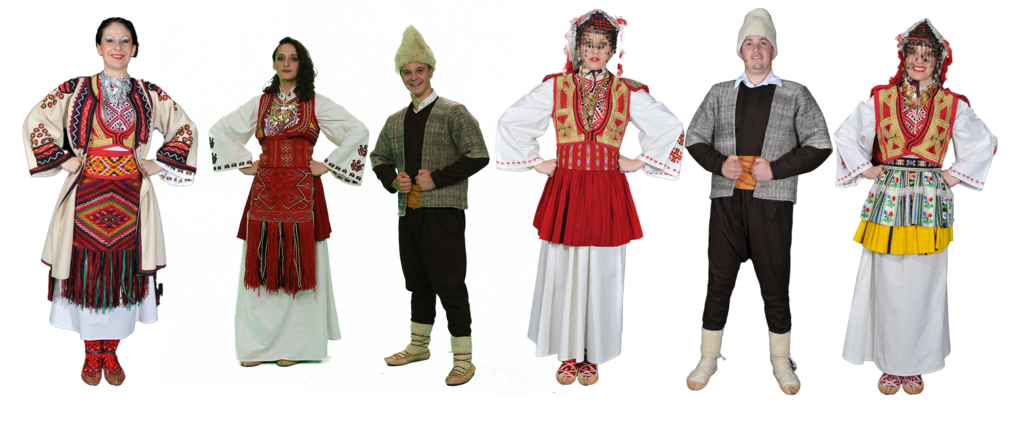Serbian clothing pattern in Sredačka Župa,
late 19th and first half of the 20th century
In addition to its geographical position, the specificity of this district is also its characteristic clothing. Although the population of the Župa is mixed, the costume represents a unique whole, both in the cut of the clothes and in the names. The climatic conditions of the mountainous climate conditioned that earlier clothing, both women's and men's, was mainly made of domestic products, wool, hemp, and leather, so that it protected the body from the cold. Over time, the influence of urban fashion on rural led to an increasing presence of factory products. Rich and expensive women's clothing was increasingly displaced by clothes bought in the city, brought by husbands from seasonal work.
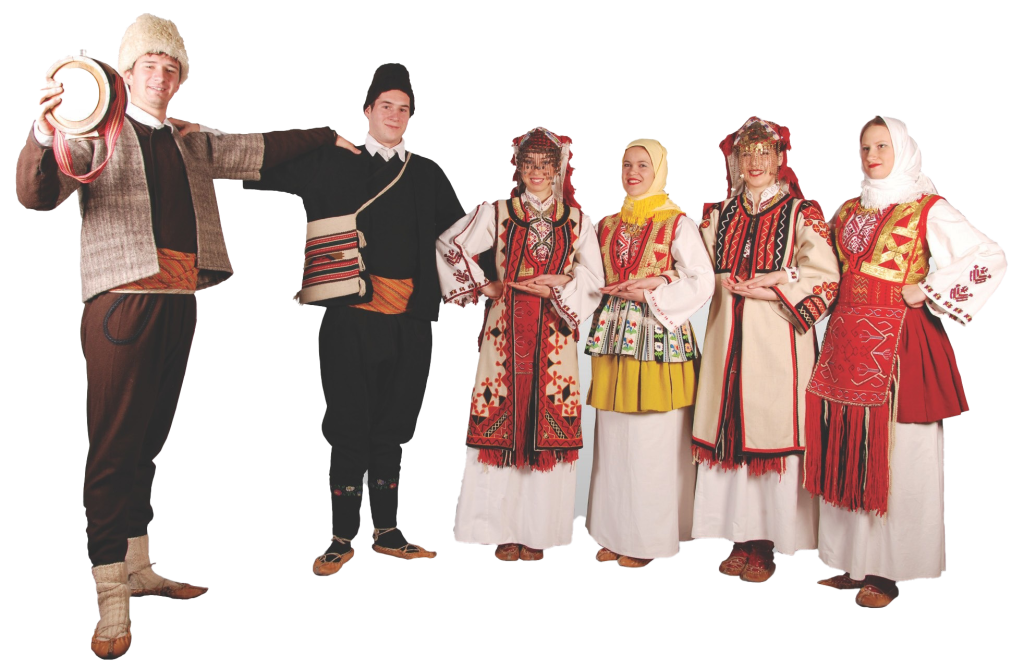
The attire of girls and women from this region consists of a far greater number of clothing items compared to men's attire. According to some experts, it ranks among the most beautiful costumes in the Balkans, both in terms of the diversity of geometric motifs and the harmony of colors, especially in the overcoat, vests, aprons, and belts. The maiden and general women's attire is embroidered with multicolored threads, decorated with braids and red felt, and interwoven with various patterns. Women, besides adorning themselves, also pay much attention to the cleanliness of their attire. One could tell whether a girl or a woman came from a wealthier or poorer household by her clothing and jewelry: those from affluent families wore necklaces made of real amber, while others wore necklaces of glass paste and other imitations. Wedding rings – silver bands were not affordable for everyone, so copper bands were also worn. Bracelets, an essential part of the attire, were very rarely made of precious metals or metals in general. Therefore, bracelets made of two, three, or more strands of beads in various colors were used. Something similar was seen with earrings. Women from poorer families wore a forehead piece made of copper or some metal alloy, while wealthy women had it forged from silver. The amount of silver on the overcoat and silver wire embroidery on the attire was an unambiguous indicator of the material status and social standing of the family, evident on every female member.
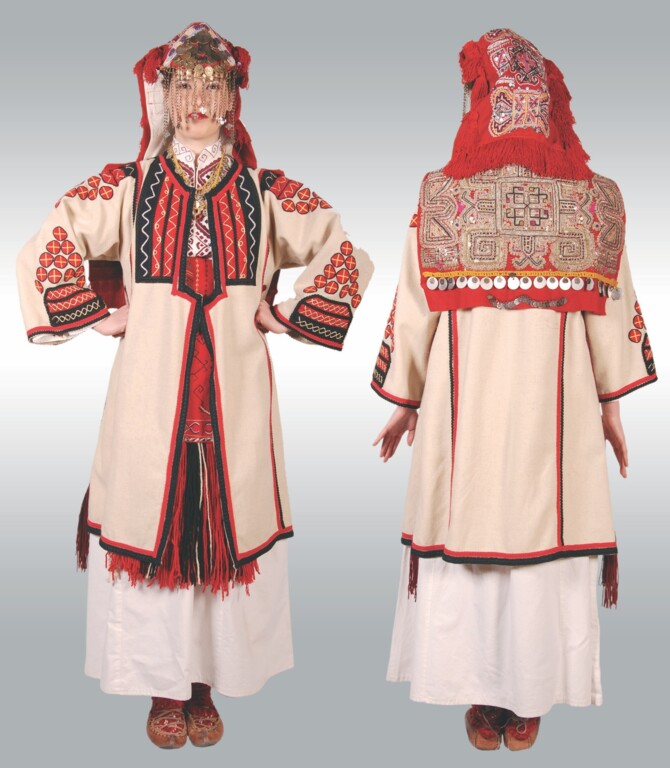
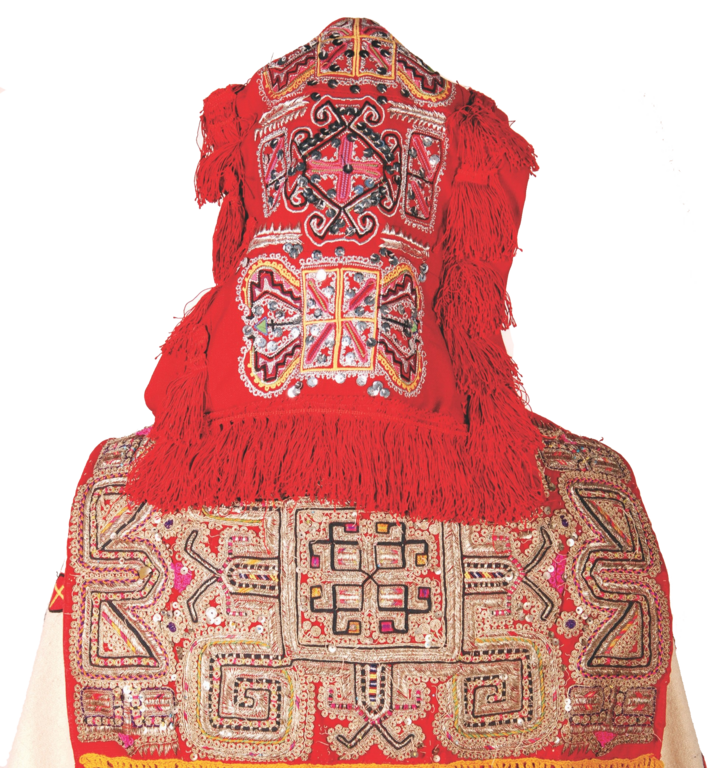
Girls combed their hair in 'kocać'. The hair was parted down the middle, regardless of whether it was braided into a 'kocać' or 'kocaći' (one or two braids), or 'komare' for married women. Hairstyles varied by age: girls wore 'putec', maidens 'kocać', and married women 'komare'. A woman would part her hair from the middle of her forehead and pull both halves of the hair over her forehead, then let them down beside both ears towards the shoulders, slightly curled, and from the shoulders, they were brought back behind the ears and braided with a short strand of hair left specifically for this purpose. (Vojislav Vojko Tanasković: Sredačka župa: Monograph. Priština: Jedinstvo, 1992. 341 p.)
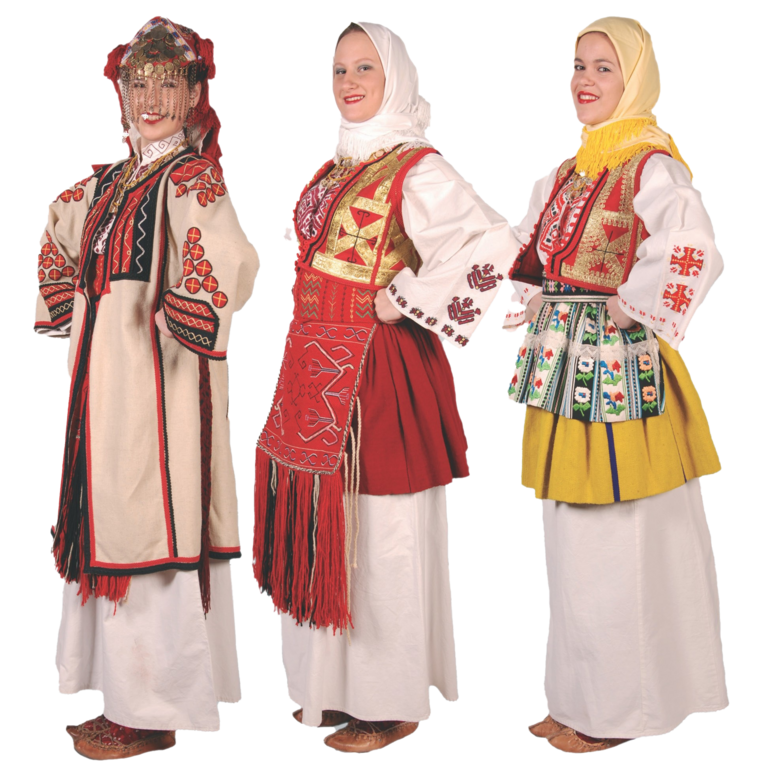
Until 1931, most Serbian women wore an overcoat, which then quickly began to disappear from attire. It covered the back part and had three main sections within that whole – the 'remče', 'krajče', and 'prevez'. 'Remče' was the upper part, worn over the forehead, 'krajče' covered the head from the forehead to the neck, and 'prevez' continued from 'krajče' and extended down to the waist. A white scarf on the head was previously a sign of mourning, and women wore it over the overcoat. It stopped being worn in 1910, and by the 1930s, it was completely replaced by a black or brown scarf, depending on how close the relative being mourned was. At that time, Serbian women began to wear 'šamija', a scarf tied in a knot at the back of the neck, with the ends crossing under the chin. There were ordinary scarves and scarves with fringes, 'resalija'. At the beginning of the 20th century, Serbian women's attire from Sredačka župa rapidly began to spread to Podrimlje, Novake, and other villages, as women from the župa sold it. The cap worn by the bride on her wedding day, 'mlanesta', was adorned with coins on the top. They served as decoration and had special names: 'šešlak', 'pulčići', etc.
Women made their shirts themselves, from homemade hemp fabric, patterned or plain, 'klot', bleached by a special process to resemble cotton. They were long, up to the middle of the calves, with wide sleeves. They were decorated with embroidery on the sleeves, chest, and around the neck, with geometric patterns from threads dyed by themselves using a special process and the pigment 'broća', so that red color predominated. Other shirts had the same sleeves but were fastened with a button.
Serbian women wore over the shirt a vest made of woolen cloth, 'klašnje', red in color, decorated with various patterns, and open at the chest. Later, Serbian women bought fabric, made 'džemadanče' and decorated it with ornamental bands and narrow ribbons. For younger women and girls, the vest made of fabric was shiny, in bright colors, and very short, sitting significantly above the waist.
Older women wore 'rku' instead of 'džemadanče', usually in winter, which was sewn from two layers of colored fabric, so that cotton was quilted between the fabric.
The front lower part of the body was covered with an apron, which was woven with patterns in woolen thread, and the pattern, the design, was carefully hidden by girls and young women from each other during work, to make it unique. Older women wore an apron with few patterns, and over it or instead of it, they also wore a 'skutača'.
'Bošča' or 'bokča' was an apron worn as a skirt, covering the lower back part of the body and hips. It was made from two panels, cross-stitched, hanging down above the knees. For younger women and girls, it was woven from woolen thread in bright red color, and for older women in darker red. For women in mourning, 'skrbosni', as well as for the very old, 'bošče' were decorated with closed colors.
The belt 'poas' was woven from wool and decorated with patterns during weaving, and then with various colorful trinkets. On special occasions, a 'poas' that was entirely covered with embroidery, trinkets, and other ornaments was worn.
On the thighs, on a special woolen rope tied to the belt or band, hung a knife or 'kanija' for the knife.
'Aljina' was a dress made of 'klašnje' cloth, which was decorated with embroidery and patterns of red felt and red and black braids on the sleeves, skirts, shoulders, and chest. This dress was worn in winter, and a similar dress was formerly worn by men.
Women made their own footwear, ‘obično’ or 'na čime', and sandals from leather, mostly cowhide, and less often horsehide. The laces used to fasten the sandals to the foot were often colored, in shades of yellow and orange. Each household slaughtered one animal in autumn, whose hide was dried and used for sandals. Leather for sandals cut to measure in the shape of a rectangle could be bought. Sandals necessarily contained 'obojci' made from woolen parts of some old clothes – sweaters, 'čakšire', etc., which served to protect the socks from getting dirty and to keep the feet warmer.
Serbian women wore woolen socks, knee-high, as the trouser legs of the lower part of the clothing reached all the way to the feet. Socks were decorated with embroidery on the foot and around the neck, with patterns called 'mečkice'.
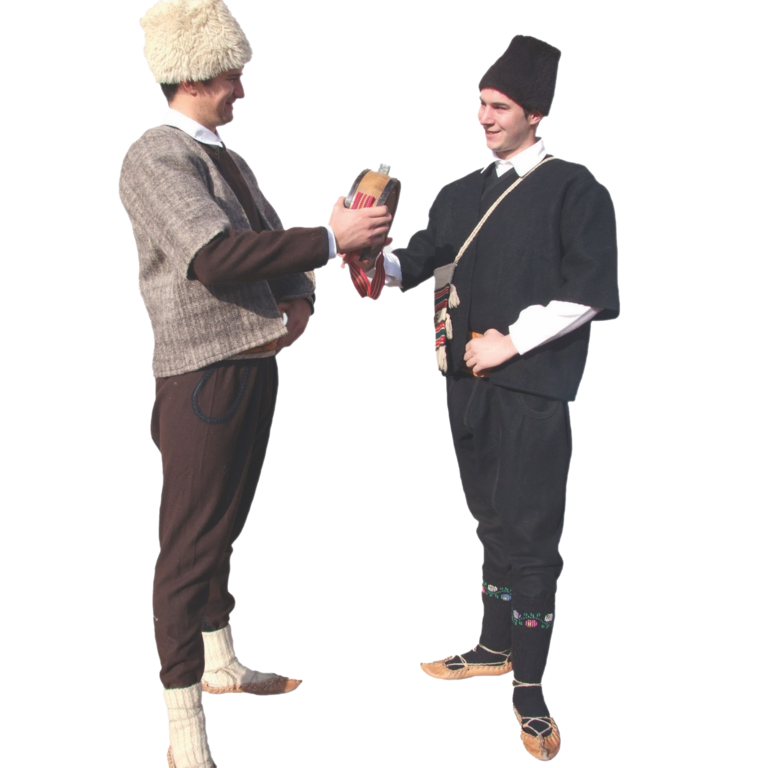
Men's attire was much simpler and plainer. During the Turkish period, Serbs wore 'nakije' caps made of camel hair, similar to 'kečet', so that it served to conceal ethnic identity, thus avoiding conflict with aggressors. Young men wore a flower on the cap, and after liberation in 1912, they began to wear 'šajkača'.
The shirt was without any patterns, very often made of hemp fabric, less often of cotton. Men did not wear underwear earlier, as the shirt was almost knee-length. 'Čakšire', 'preklopnik', 'koparče', and 'korporan' were made of cloth and necessarily edged with braid.
'Čakšire' were sewn from black cloth, except for the groom, whose 'čakšire' had to be made of white cloth, decorated with braids around the trouser legs and 'čkeka', two symmetrically made openings at the height of the groin. 'Čakšire' did not have pockets and were tied with 'učkur'. Men began to use belts only after the first returns from seasonal work, and soon thereafter 'čakšire' and 'korporan' were replaced by trousers and a jacket.
'Preklopnik' was worn over the shirt, usually made of white cloth, sleeveless. A similar garment with sleeves was called 'mintan'. Both were worn in winter.
'Korporan' was worn over the 'preklopnik', also made of cloth, and on the back, it had a strong, large square-shaped collar, about 30 x 30 cm, which was raised over the head during rain and snow and fastened with buttons.
A long belt woven from wool, either monochrome or with stripes made during weaving, was worn over the 'preklopnik'.
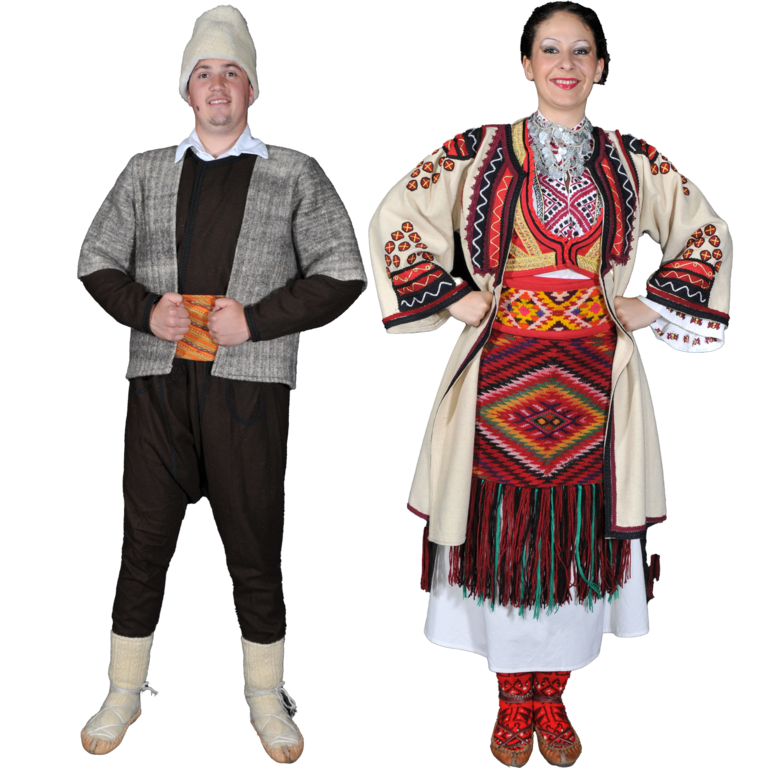
In the mid-19th century, a 'dolama' was also worn, a garment that reached almost to the knees and was decorated with black braids. Shepherds wore a 'zubun zban' made of plain cloth, in the later autumn and early spring days when there was fog, rain, or sleet.
Opanci (peasant shoe) were made of leather, with white laces. Young men had knee-high socks for special occasions, embroidered at the very top, worn over the trouser legs.
